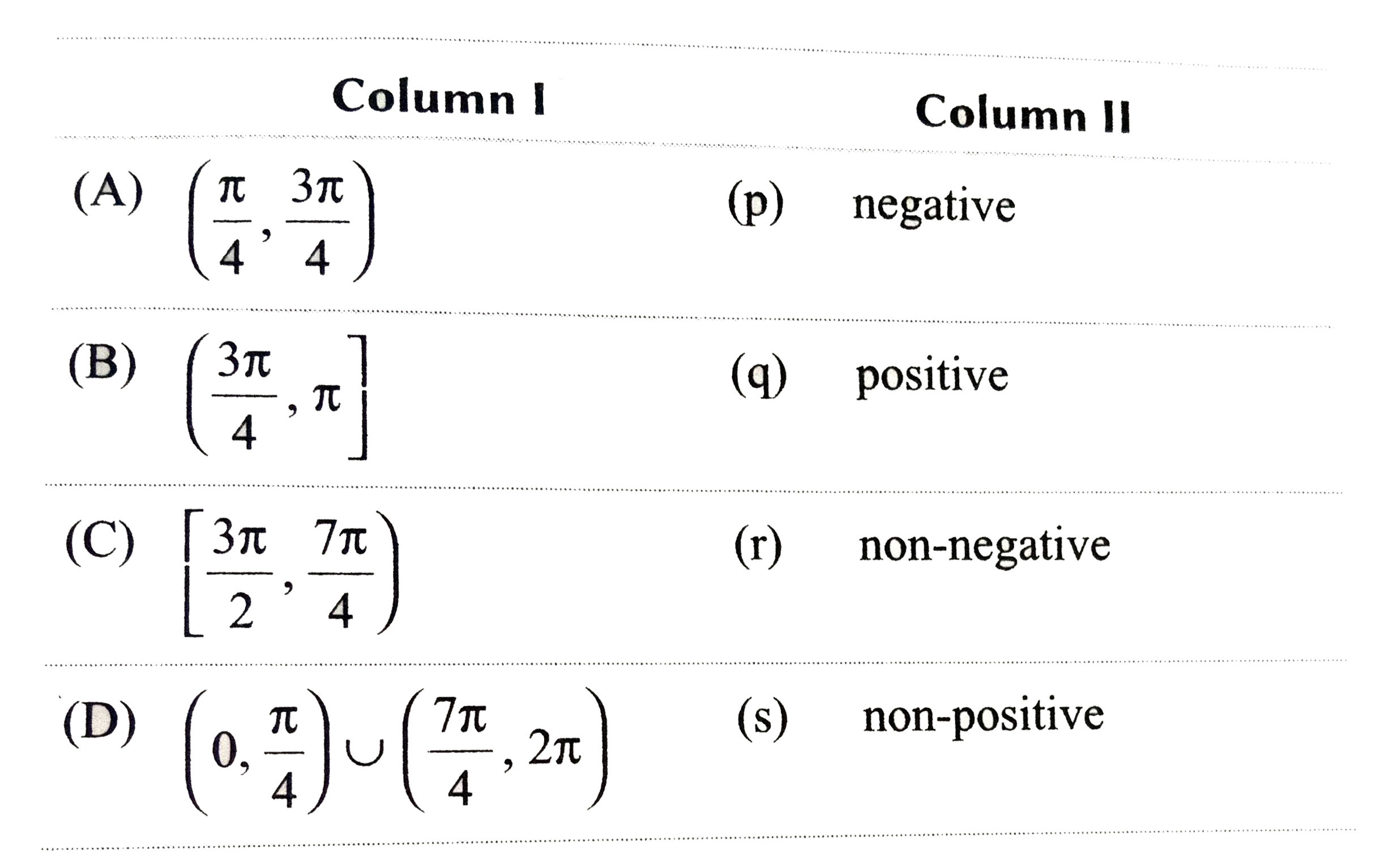Consider the function f(θ)=∫10∣∣√1−x2−sinθ∣∣√1−x2dx, where 0≤θ≤π2, then
fmin=√2−1
fmin=√2+1
fmax=1
fmax=π2−1
The correct Answer is:A, B, C, D
To solve the problem, we need to evaluate the integral function defined as:
f(θ)=∫10|√1−x2−sinθ|√1−x2dx
where 0≤θ≤π2.
Step 1: Substitution
We can use the substitution x=cosϕ, which gives dx=−sinϕdϕ. The limits change as follows:
- When x=0, ϕ=π2
- When x=1, ϕ=0
Thus, we rewrite the integral:
f(θ)=∫0π2|√1−cos2ϕ−sinθ|√1−cos2ϕ(−sinϕ)dϕ
This simplifies to:
f(θ)=∫π20|sinϕ−sinθ|sinϕsinϕdϕ=∫π20|sinϕ−sinθ|dϕ
Step 2: Splitting the Integral
Next, we need to split the integral based on the value of sinθ:
- For ϕ in (0,θ), sinϕ≤sinθ
- For ϕ in (θ,π2), sinϕ≥sinθ
Thus, we can write:
f(θ)=∫θ0(sinθ−sinϕ)dϕ+∫π2θ(sinϕ−sinθ)dϕ
Step 3: Evaluating Each Integral
Now we evaluate each part separately.
1. First Integral:
∫θ0(sinθ−sinϕ)dϕ=sinθ⋅θ−∫θ0sinϕdϕ
The integral of sinϕ is −cosϕ, so:
=sinθ⋅θ+cos(0)−cos(θ)=sinθ⋅θ+1−cosθ
2. Second Integral:
∫π2θ(sinϕ−sinθ)dϕ=∫π2θsinϕdϕ−sinθ⋅(π2−θ)
Again, the integral of sinϕ gives:
=(−cosϕ)π2θ−sinθ⋅(π2−θ)=(0+cosθ)−sinθ⋅(π2−θ)
Step 4: Combine the Results
Now we combine both parts:
f(θ)=(sinθ⋅θ+1−cosθ)+(cosθ−sinθ⋅(π2−θ))
This simplifies to:
f(θ)=sinθ⋅θ+1−sinθ⋅(π2−θ)
Step 5: Finding Minimum and Maximum
To find the minimum and maximum values of f(θ) over the interval (0,π2), we can evaluate f(0), f(π4), and f(π2):
1. At θ=0:
f(0)=1
2. At θ=π4:
f(π4)=√2−1
3. At θ=π2:
f(π2)=π2−1
Conclusion
From the evaluations, we find that:
- Minimum value occurs at θ=π4 with f(π4)=√2−1.
- Maximum value occurs at θ=0 with f(0)=1.
Thus, the minimum value is √2−1 and the maximum value is 1.
We can use the substitution x=cosϕ, which gives dx=−sinϕdϕ. The limits change as follows:
- When x=0, ϕ=π2
- When x=1, ϕ=0
Next, we need to split the integral based on the value of sinθ:
- For ϕ in (0,θ), sinϕ≤sinθ
- For ϕ in (θ,π2), sinϕ≥sinθ
Now we evaluate each part separately.
∫θ0(sinθ−sinϕ)dϕ=sinθ⋅θ−∫θ0sinϕdϕ
The integral of sinϕ is −cosϕ, so:
=sinθ⋅θ+cos(0)−cos(θ)=sinθ⋅θ+1−cosθ
∫π2θ(sinϕ−sinθ)dϕ=∫π2θsinϕdϕ−sinθ⋅(π2−θ)
Again, the integral of sinϕ gives:
=(−cosϕ)π2θ−sinθ⋅(π2−θ)=(0+cosθ)−sinθ⋅(π2−θ)
Now we combine both parts:
To find the minimum and maximum values of f(θ) over the interval (0,π2), we can evaluate f(0), f(π4), and f(π2):
f(0)=1
f(π4)=√2−1
f(π2)=π2−1
From the evaluations, we find that:
- Maximum value occurs at θ=0 with f(0)=1.
Topper's Solved these Questions
- DEFINITE INTEGRATION Book:CENGAGE ENGLISHChapter:DEFINITE INTEGRATION Exercise:LC_TYPE
Explore 31 Videos
- DEFINITE INTEGRATION Book:CENGAGE ENGLISHChapter:DEFINITE INTEGRATION Exercise:MATRIX MATCH_TYPE
Explore 6 Videos
- DEFINITE INTEGRATION Book:CENGAGE ENGLISHChapter:DEFINITE INTEGRATION Exercise:SCQ_TYPE
Explore 113 Videos
- CURVE TRACINGBook:CENGAGE ENGLISHChapter:CURVE TRACINGExercise:EXERCISES
Explore 24 Videos
- DETERMINANTBook:CENGAGE ENGLISHChapter:DETERMINANTExercise:Multiple Correct Answer
Explore 5 Videos
Similar Questions
∫π/60√1−sin2xdx
View SolutionProve that :∫10logx√1−x2dx=−π2log2
View Solution∫π/20√1−cos2xdx
View Solution∫π/20√1−cos2xdx
View SolutionSolve : 2cos2θ+sinθ≤2, where π2≤θ≤3π2.
View SolutionProve that : ∫π20√1−sin2xdx=2(√2−1)
View SolutionLetf(θ)=∫10(x+sinθ)2dxandg(θ)=∫10(x+cosθ)2dx
where θ∈[0,2π]. The quantity f(θ)−g(θ),∀θ in the interval given in column I, is

View SolutionFind the number points where f(θ)=∫1−1sinθdx1−2xcosθ+x2 is discontinous where θ∈[0,2π].
View SolutionSolve sin2θ−cosθ=14,0≤θ≤2π.
View SolutionShow that ∫π20√(sin2θ)sinθdθ=π4
View Solution

